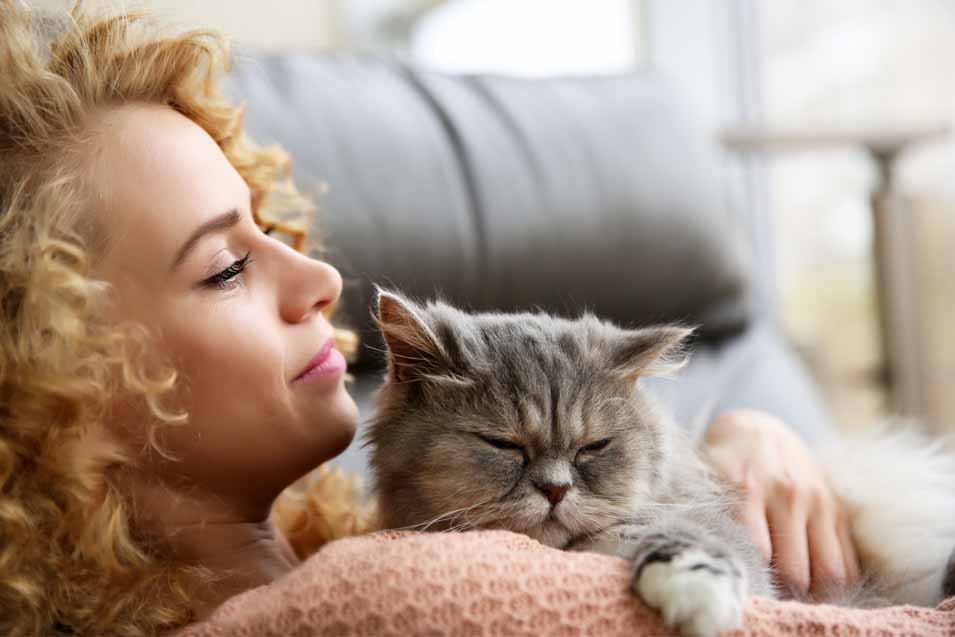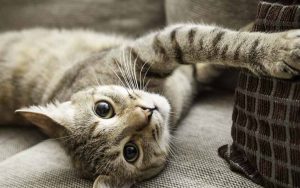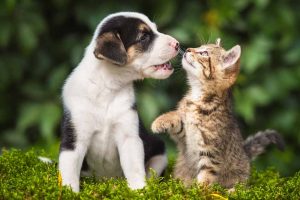There’s no doubt that purring is one of the most common sounds that cats make. We know little to nothing about chirping, chattering, or hissing, but we might know even less about purring.
Most cat owners tend to think that their beloved pets purr only when they are content. The truth is that it’s a little more complicated than that. Sometimes, cats purr to communicate their needs, as well as their emotions. They might be pleased with something you’ve done, or they might be feeling nervous.
Also, what is the origin of purring and what other types of felines do it? If you’ve ever read an article about this topic, you might have found out that this sound cannot be made or even imitated by many other species than felines. It’s extremely specific to cats, and they start to make it when they’re just a few days old.
Let’s look at what your cat is trying to tell you whenever he or she purrs, and some other interesting facts, too.
Why Does It Happen?
There are four main reasons why this naturally occurring phenomenon happens in cats. One of them is to let their mothers know where they are located when they are very young. Purring also assists in creating a unique bond between the kitten and the mother. Meanwhile, nursing mothers use it as if it were a lullaby.
Expressing contentment can also be done via purring. If your cat is laying on his or her back, with the tail mostly still and the eyes half-closed, it’s safe to assume that the pet is happy if there’s purring involved.
Some studies have suggested that felines also use purring as a way of providing themselves with relief. In short, it’s like a way of soothing themselves. It just makes them feel better. The vibrations created by the purring can apparently help with the healing of bones and wounds, ease breathing, lessen swelling and pain, and even repair tendons and build muscle.
Finally, cats and kittens purr when they need something, especially food. There is a difference in the sound of a purr made by a cat when she is just content or happy and the one that she makes when she is hungry. Purring to ask that dinner is served typically results in a purr-like sound combined with mewing. According to Dr. Joanne Righetti, who is an animal behaviorist, this sound can be considered a ‘solicitation purr’.
A Powerful Healing Action
There is one hypothesis according to which purring has a significant healing action. The vibrations resulting from the activity are said to be rejuvenating, especially at times when the cat is trying to recover from stressful moments and events.
The vibration frequency ranges from 20Hz to 150Hz and it is said to promote bone growth because the bones harden under that pressure. Also, soft tissues respond to frequencies around 100Hz, according to many researchers. The frequency changes depending on what the animal is trying to achieve. When your cat wants you to feed him or her, the frequency of the purring ranges from 220 to 520Hz, so that you can hear it and even more, correlate it with a baby’s cry.
Purring isn’t associated with stress relief only for the felines. In actuality, owning, caring, and most of all, petting a cat are linked with a series of beneficial effects for their human companions, too. Apparently, petting a cat regularly can cut the risk of heart disease and strokes by up to one third.
What Other Animals Purr Besides Cats?
As you might have guessed, some big, or rather, bigger cats can purr, too. Lions and generally, large cats that are capable of roaring aren’t equipped with the apparatus that they need to be able to emit these sounds. However, both bobcats and cheetahs can do it, but they can’t roar.
What makes this sound entirely unique is the placement of the hard hyoid bone in the feline’s throat. If you’ve ever tried imitating the sound that your feline buddy makes when purring, you’ve noticed that you can’t replicate the exact same volume or even frequency. That’s because the human anatomy makes it impossible for you to purr.
Something you might want to know, however, is that other animals can purr, too. If you’ve ever held a guinea pig that’s content, you’ve probably heard sounds that are similar to car purring. Others that can do it are the mongoose, the raccoon, and the genet. As unusual as it might seem, even hyenas can purr.
When Purring Is an Inconvenience
If you own one of those cuddly cats who purr all day long and crave your care and attention, you might have noticed that bringing him or her to the vet’s and allowing the doctor to do their job can be challenging. In their attempt to soothe themselves, cats can also purr when they are being examined.
In case you didn’t know, cats typically stop purring when they hear the sound of running water. If the vet can’t listen to your pet’s heartbeat or breathing because of the sounds made by the animal, you might want to suggest turning a faucet on.






